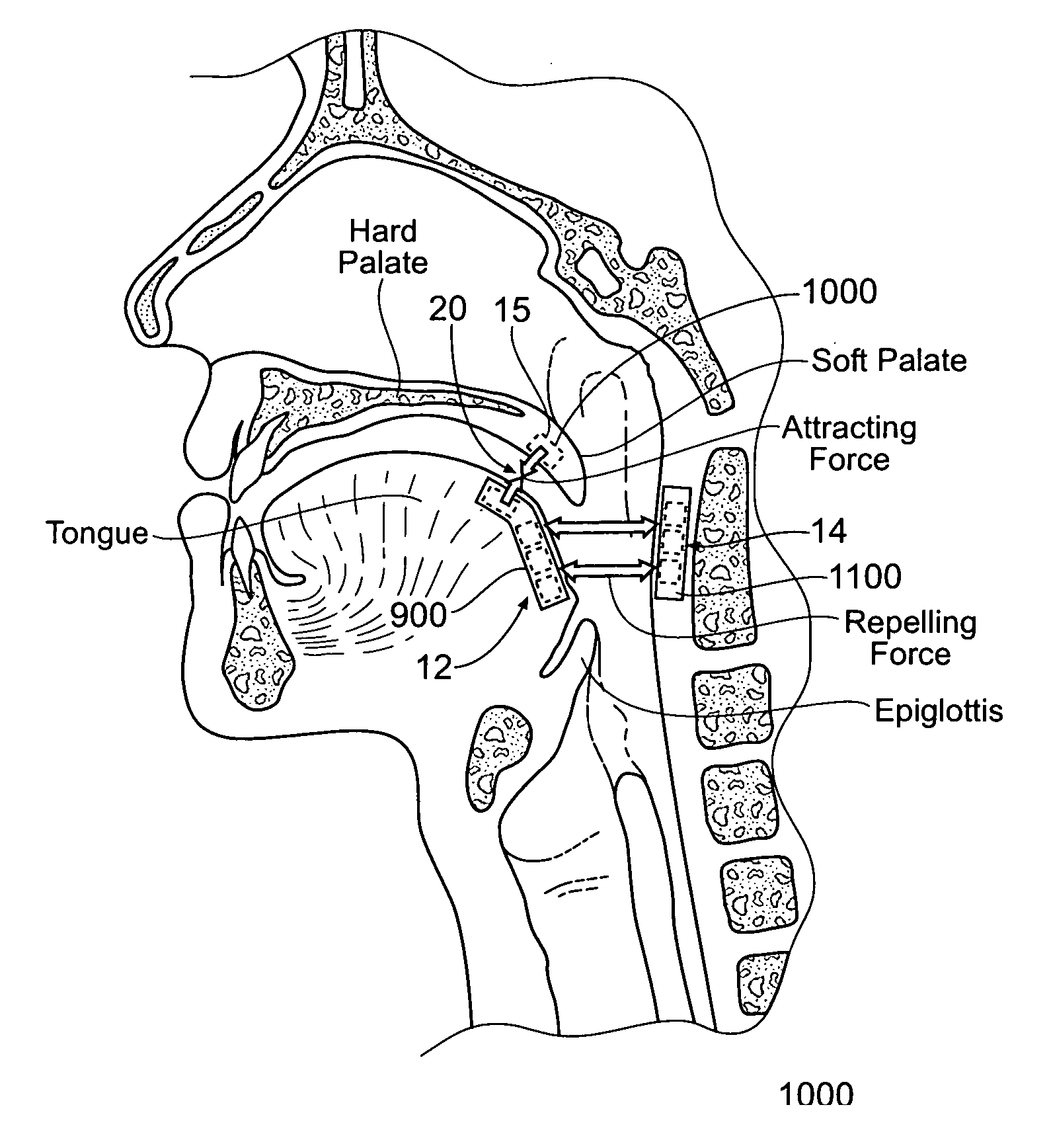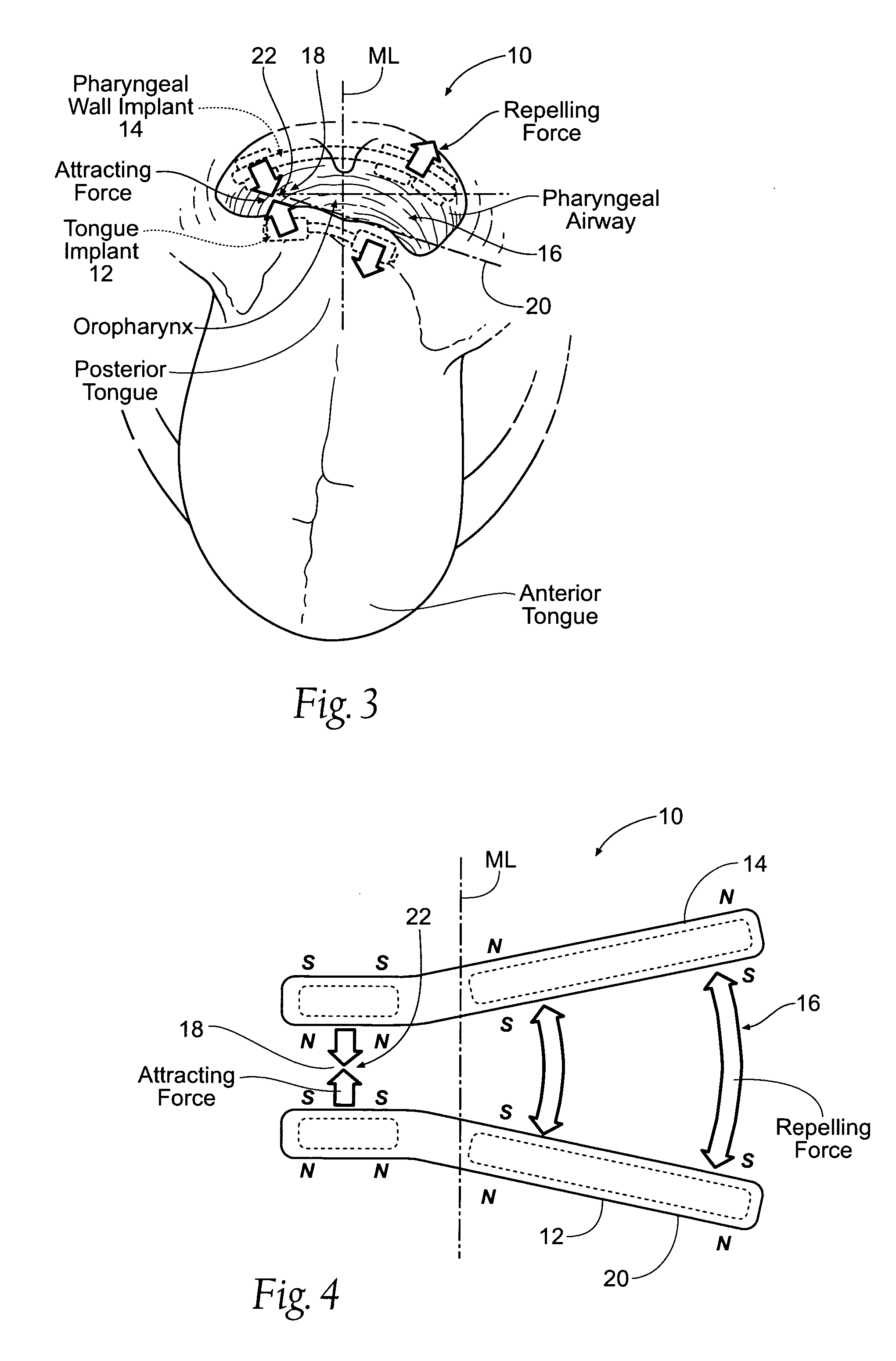Self-anchoring magnetic force implant devices, systems, and methods
a magnetic force implant and self-anchoring technology, applied in the field of self-anchoring magnetic force implant devices, systems, and methods, can solve the problems of affecting the quality of life of patients, and affecting the quality of life of patients, and achieve the effect of “hinge” structur
- Summary
- Abstract
- Description
- Claims
- Application Information
AI Technical Summary
Benefits of technology
Problems solved by technology
Method used
Image
Examples
Embodiment Construction
[0040] This Specification discloses various magnetic-based devices, systems, and methods for resisting collapse of fluid passageway in the body. The devices, systems, and methods are particularly well suited for resisting collapse of an airway, e.g., for treating sleep disordered breathing, including sleep apnea. For this reason, the devices, systems, and methods will be described in this context. Still, it should be appreciated that the disclosed devices, systems, and methods are applicable for use in treating other dysfunctions elsewhere in the body, which are not necessarily sleep disorder related.
[0041]FIG. 1 shows, in an anatomic view, a caudal-facing horizontal plane view of the oropharynx, showing the general orientation of the tongue, pharyngeal wall, pharyngeal airway, and uvula (soft palate). Normally, the muscles of the upper part of the throat keep the airway open to permit air flow into the lungs, as FIG. 1 shows.
[0042]FIG. 2 shows, in an anatomic view, the same regio...
PUM
 Login to View More
Login to View More Abstract
Description
Claims
Application Information
 Login to View More
Login to View More - R&D
- Intellectual Property
- Life Sciences
- Materials
- Tech Scout
- Unparalleled Data Quality
- Higher Quality Content
- 60% Fewer Hallucinations
Browse by: Latest US Patents, China's latest patents, Technical Efficacy Thesaurus, Application Domain, Technology Topic, Popular Technical Reports.
© 2025 PatSnap. All rights reserved.Legal|Privacy policy|Modern Slavery Act Transparency Statement|Sitemap|About US| Contact US: help@patsnap.com



